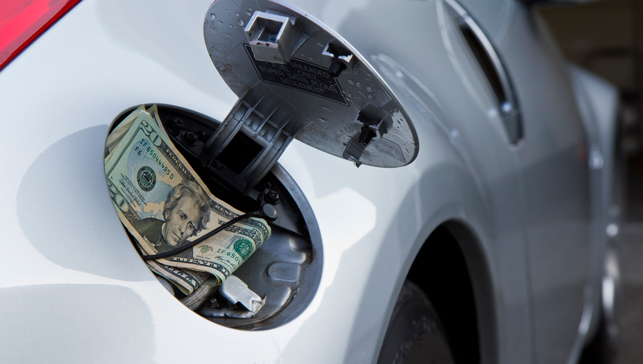Gas prices in California and across the country have been rising sharply since the start of the year.
According to the Orange County Register, “the cost of an average gallon of gasoline has climbed to “the highest it’s been in 67 weeks.”
As of March 17, average gas prices in California were $3.87 per gallon for regular unleaded, roughly $1 above the national average of $2.88, according to AAA. This is nearly 40 cents higher than one month prior – and about 55 cents per gallon higher than California drivers paid at the start of the Covid-19 pandemic in March 2020.
So, why are we paying so much for gas all of a sudden?
Some of the reason is supply and demand. As Covid-19 restrictions are loosened and more people are driving, demand is up. For example, Bloomberg News reported earlier this month that “daily traffic on the seven toll bridges in the San Francisco Bay Area rose by an average of 13 percent in February compared with October.”
AAA estimated that Americans were paying 14 percent higher for gas on average in March compared to February, citing Energy Information Administration data showing gas stocks declining while demand was increasing.
Supplies also tightened due to refinery shutdowns from the winter storms that hit Texas hard in February. As Bloomberg noted, “though the West Coast has its own oil-refining hub, independent from the Gulf, both regions supply Arizona,” which relied more heavily on California for supply during the crisis.
Refineries in Southern California were also down for periods in February and March for maintenance. Phillips 66 had several units down in Los Angeles in February, and “Valero had long planned a shutdown at its Wilmington plant through March” says Bloomberg.
Much of the reason we pay more for gas in California compared to everywhere else is government policy.
As PRI’s Dr. Wayne Winegarden documented in his recent study, “Legislating Energy Prosperity,” California drivers paid a 37 percent premium for gasoline versus the national average thanks to big government energy policies. If the state were to ease these mandates, we could collectively save $9.6 billion annually (compared to 2019 prices).
A recently-released study from Stillwater Associates notes that “price increases due to taxes and fees are not insignificant,” and calculates the government gas taxes and fees add about $1.19 per gallon to the price of fuel in the Golden State.
These include the federal excise tax (18.3 cents per gallon), state excise tax (50.5 cents per gallon), sales tax applied to the price of gas plus excise tax (which is effectively double taxation), underground storage tank cleanup fee (2.0 cents per gallon), cap and trade costs (about 14.3 cents per gallon), and the Low Carbon Fuel Standard (about 22.6 cents per gallon based on current prices).
And for all the additional costs that Sacramento imposes on California drivers, the state’s big government mandates aren’t doing a terribly effective job in reducing emissions. As Winegarden found in his research, states that have embraced market-based energy policies have been more effective in lowering emissions. Nationwide, emissions have fallen 14 percent since 2007, versus just 9 percent in California.
Prices could grow even higher in the coming weeks. Traditionally, gas prices jump in the summer months as more people travel for summer vacations. Expect to see even more traveling this year as things slowly return to normal and families are finally able to escape their homes.
As gas prices threaten to pass $4 soon, the question remains – what, if anything, will Sacramento do to reverse or reform the misguided policies that are adding to the energy burdens of millions in California’s poor, rural, inland, and minority communities?
Tim Anaya is the Pacific Research Institute’s senior director of communications and the Sacramento office.

